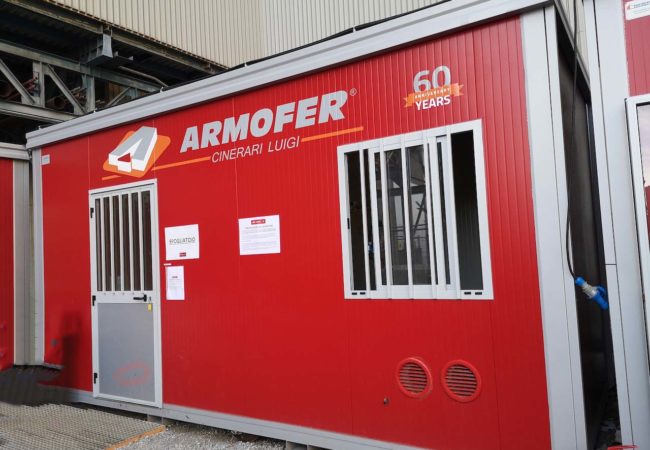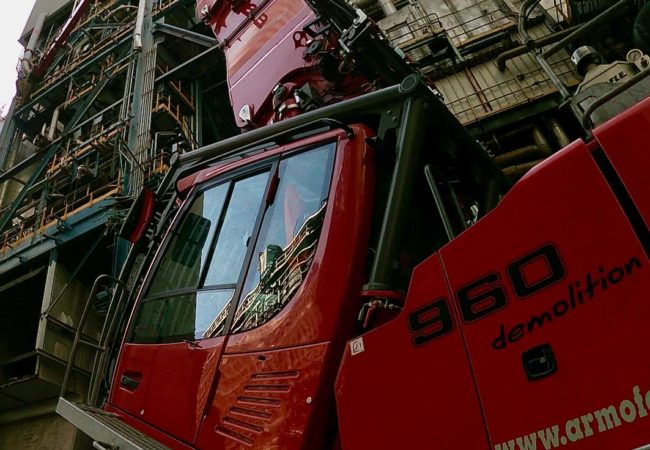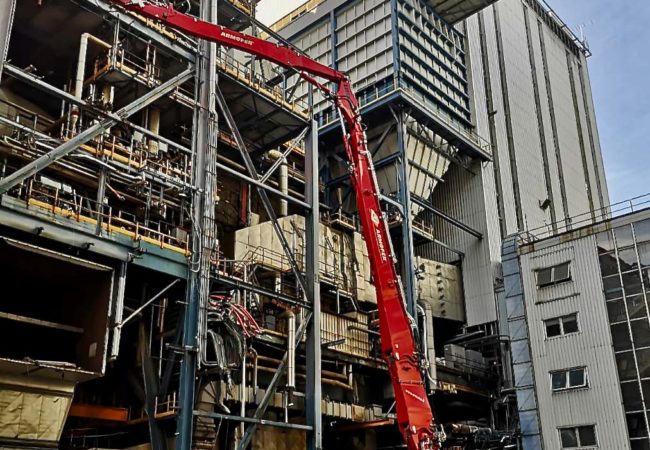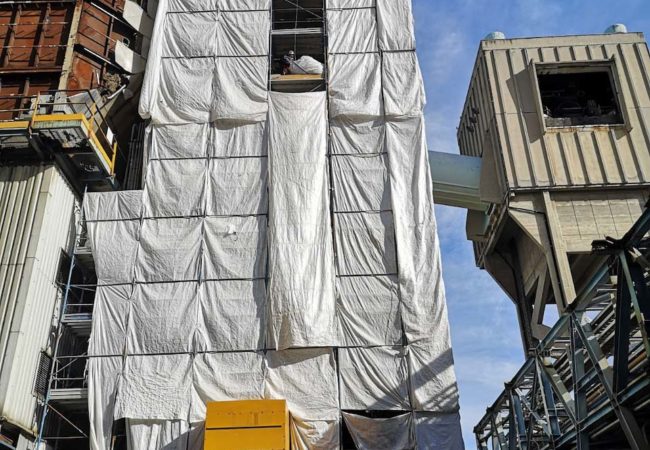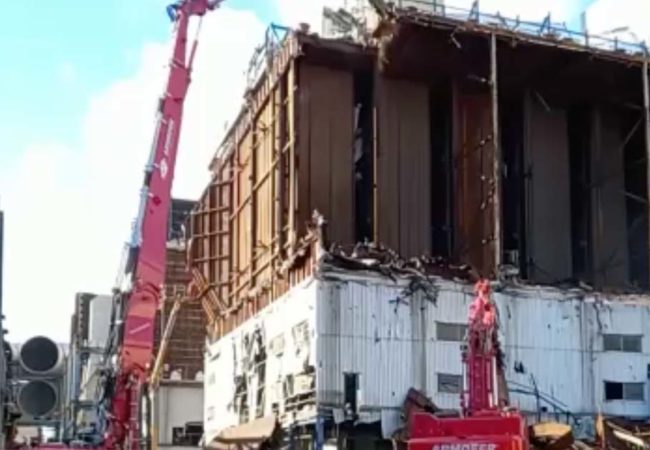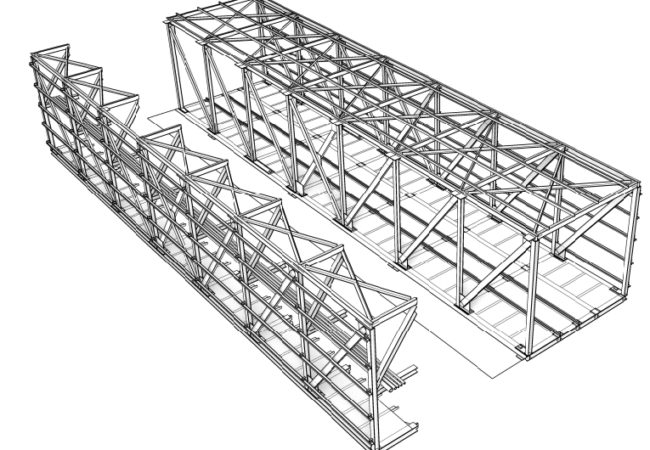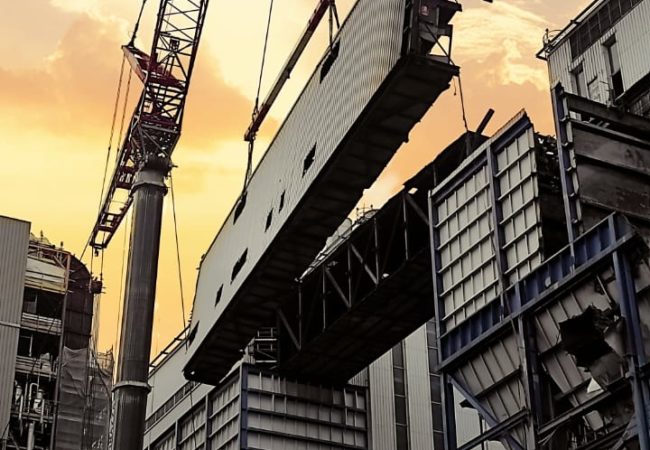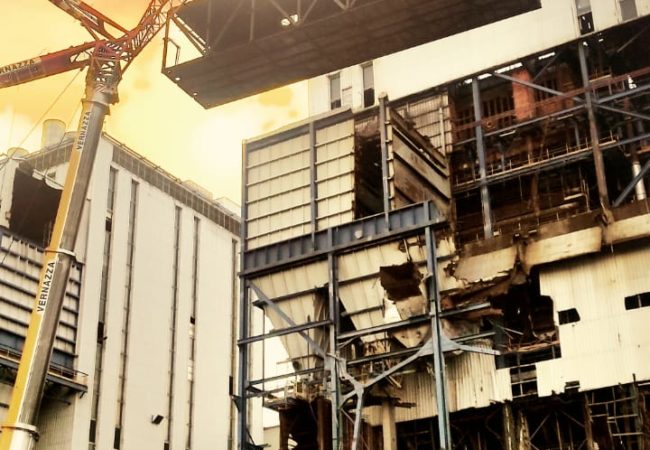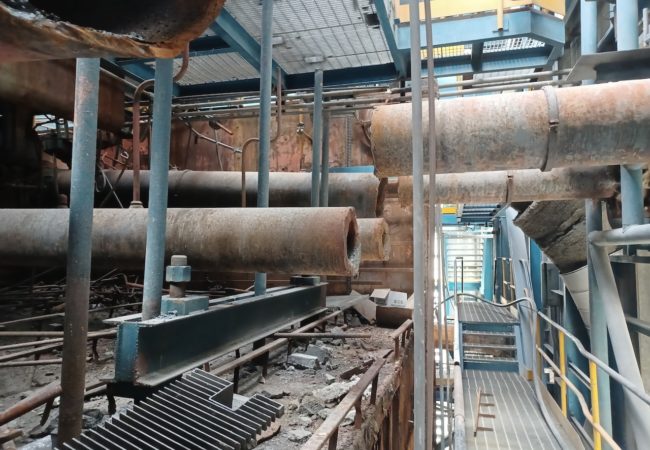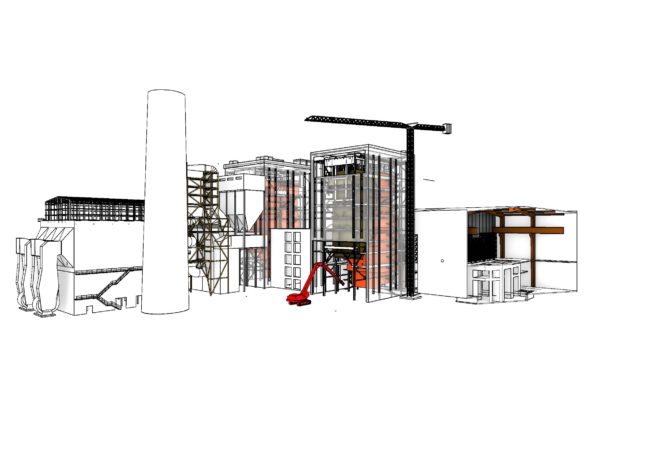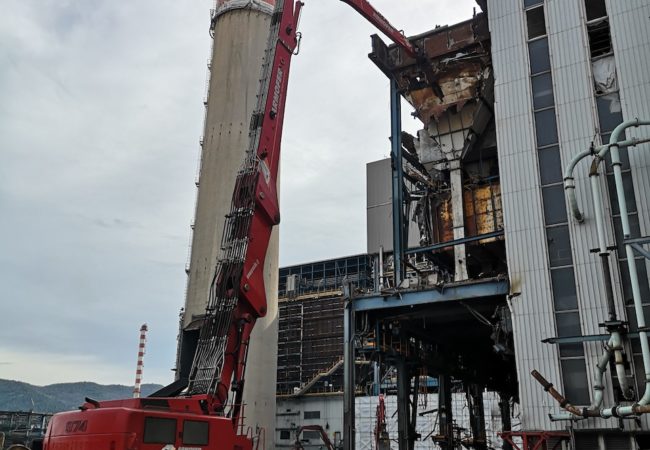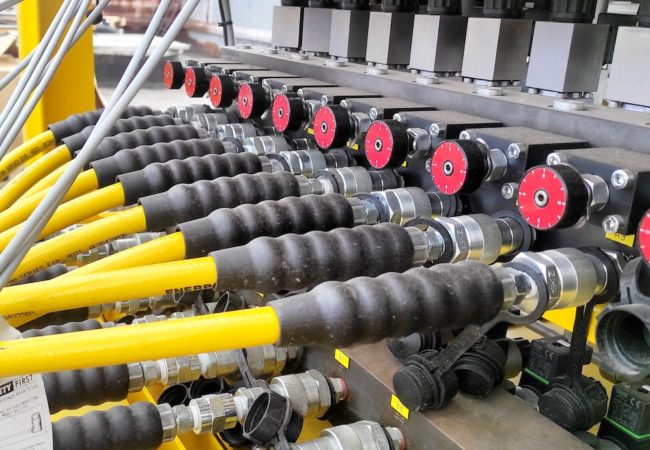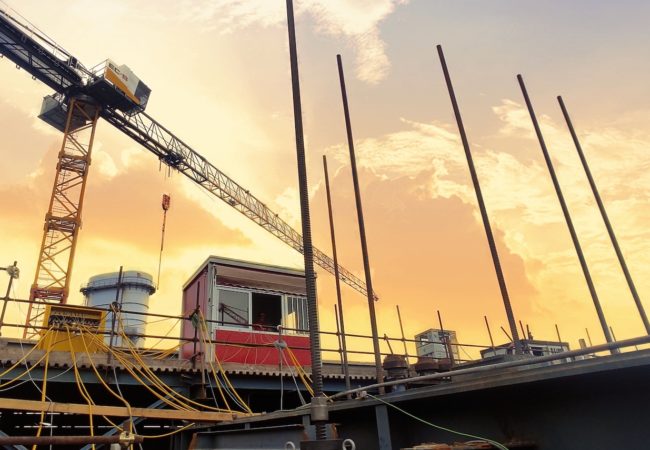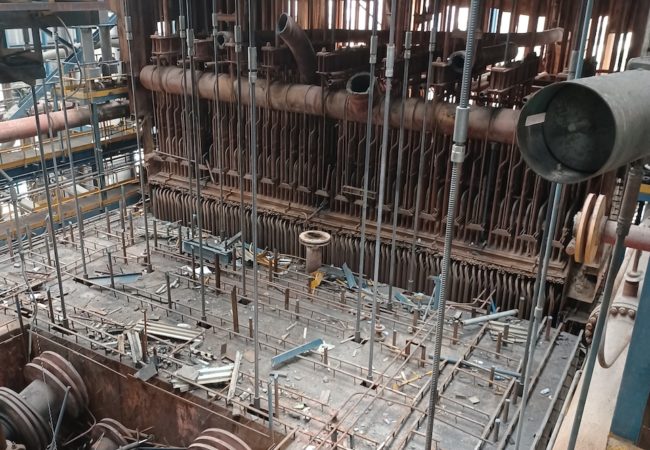VADO LIGURE (SV)
TIRRENO POWER, POWER PLANT
Decommissioning Thermoelectric Power Plant Units
The decommissioning work at the Tirreno Power plant in Vado Ligure got underway at the end of the summer. It consists of twin bodies, two thermoelectric units to be completely decommissioned and dismantled. The work is in progress, according to schedule, entrusted to Armofer technicians. The new LIEBHERR 960 is already on duty! -
VAF/MMMF REMOVAL
Armofer is currently carrying out the remediation of environmental liabilities consisting of FAV, Artificial Glass Fibres used in high-efficiency filters and for thermal insulation of structures. Punctual remediation, dismantling of the external insulated facades and removal of the artefacts to the ground.
Armofer deploys the most up-to-date risk prevention procedures for the health of employees and the environment, operating, as required, in statically or statically and dynamically confined environments.
Fabrications (pipes, ducts, flanges, gaskets, and finally the dismantling of metal casings) are carried out using both hot and cold cutting techniques. Handling, transport, packaging and final bagging, all operations are performed with the aid of mechanical means to minimise manual operations.
SECTIONING AT HEIGHT
The sectioning of the walkway that joins two plants takes place hot at height, after the artefact has been carefully prepared. A careful preliminary study identifies the appropriate sectioning (the artefact is sectioned at height and moved to the ground in several crane pulls) according to the weight of the structure and its distribution, as well as the anchorage points for the chains to ensure balance and correct translation.
A crane intervenes.
BOILERS LOWERING
Between May and June 2022, the construction site faces one of its most spectacular phases: the lowering of the boilers. The huge suspended boilers (the roof reaches 60 m) that make up the thermoelectric power plant were the heart of the plant itself and today constitute the most complex artefacts to be demolished. The combustion chambers and economisers, to allow for thermal expansion when operational, are suspended from the ironwork structure that supports them (we can imagine the boilers as an 18-storey building above ground!). To reduce the weight to be transferred to the ground with Lowering System 2500, consisting of hydraulic jacks and Diwidag bars. The boiler was divided into two parts and therefore literally sectioned off over its entire height of 53 m into two parts: combustion chamber and economiser weighing 860 tons and 1,160 tons respectively. A total of 18 jacks were used for the first and 24 jacks will be pulled simultaneously for the second part. They are controlled by two different control units which in turn are controlled by a single logical control unit, the so-called control cabin, from which technicians monitor the process. The system is modular and, in this configuration, can carry 2,500 tonnes (12+12 jacks working simultaneously).
Once the abseiling system has been set up and the structure has been taken over by the system, the actual abseiling, i.e. the lowering of the structure to the ground for each planned step corresponding to approximately 70 cm takes only 20 minutes, with approximately 9 people on site. The complete abseiling cycle (approx. 15 m) takes a couple of days.
The structure, which has obviously already been insulated and perfectly 'cleaned', has also been appropriately sectioned off for its entire height in order to free it from both the support castle and the other parts of the structure to which it is connected with piping and installations, is lowered in consecutive cycles of 15-17 m in height each.
Once on the ground, still within its structural castle, the lower portion of the artefact is mechanically demolished.

